1. Herrero JI. De novo malignancies following liver transplantation: impact and recommendations. Liver Transpl. 2009; 15(Suppl 2):S90–S94. PMID:
19877025.

2. Hwang S, Ahn CS, Kim KH, Moon DB, Ha TY, Song GW, et al. Super-selection of a subgroup of hepatocellular carcinoma patients at minimal risk of recurrence for liver transplantation. J Gastrointest Surg. 2011; 15(6):971–981. PMID:
21547706.

3. Alshahrani AA, Ha SM, Hwang S, Ahn CS, Kim KH, Moon DB, et al. Clinical features and surveillance of very late hepatocellular carcinoma recurrence after liver transplantation. Ann Transplant. 2018; 23:659–665. PMID:
30237389.

4. Jung DH, Tak E, Hwang S, Song GW, Ahn CS, Kim KH, et al. Antitumor effect of sorafenib and mammalian target of rapamycin inhibitor in liver transplantation recipients with hepatocellular carcinoma recurrence. Liver Transpl. 2018; 24(7):932–945. PMID:
29710388.

5. Haagsma EB, Hagens VE, Schaapveld M, van den Berg AP, de Vries EG, Klompmaker IJ, et al. Increased cancer risk after liver transplantation: a population-based study. J Hepatol. 2001; 34(1):84–91. PMID:
11211912.

6. Baccarani U, Adani GL, Serraino D, Lorenzin D, Gambato M, Buda A, et al. De novo tumors are a major cause of late mortality after orthotopic liver transplantation. Transplant Proc. 2009; 41(4):1303–1305. PMID:
19460546.

7. Baccarani U, Piselli P, Serraino D, Adani GL, Lorenzin D, Gambato M, et al. Comparison of de novo tumours after liver transplantation with incidence rates from Italian cancer registries. Dig Liver Dis. 2010; 42(1):55–60. PMID:
19497797.

8. Jain A, Patil VP, Fung J. Incidence of de novo cancer and lymphoproliferative disorders after liver transplantation in relation to age and duration of follow-up. Liver Transpl. 2008; 14(10):1406–1411. PMID:
18825680.

9. Sapisochin G, Bilbao I, Dopazo C, Castells L, Lázaro JL, Rodríguez R, et al. Evolution and management of de novo neoplasm post-liver transplantation: a 20-year experience from a single European centre. Hepatol Int. 2011; 5(2):707–715. PMID:
21484107.

10. Vallejo GH, Romero CJ, de Vicente JC. Incidence and risk factors for cancer after liver transplantation. Crit Rev Oncol Hematol. 2005; 56(1):87–99. PMID:
15979889.

11. Jung KW, Park S, Kong HJ, Won YJ, Lee JY, Seo HG, et al. Cancer statistics in Korea: incidence, mortality, survival, and prevalence in 2009. Cancer Res Treat. 2012; 44(1):11–24. PMID:
22500156.

12. Park HW, Hwang S, Ahn CS, Kim KH, Moon DB, Ha TY, et al. De novo malignancies after liver transplantation: incidence comparison with the Korean cancer registry. Transplant Proc. 2012; 44(3):802–805. PMID:
22483500.

13. Jung DH, Hwang S, Song GW, Ahn CS, Moon DB, Ha TY, et al. Survival benefit of early cancer detection through regular endoscopic screening for de novo gastric and colorectal cancers in Korean liver transplant recipients. Transplant Proc. 2016; 48(1):145–151. PMID:
26915860.

14. Jung DH, Hwang S, Song GW, Ahn CS, Moon DB, Kim KH, et al. Longterm prognosis of combined hepatocellular carcinoma-cholangiocarcinoma following liver transplantation and resection. Liver Transpl. 2017; 23(3):330–341. PMID:
28027599.

15. Jung DH, Hwang S, Song GW, Ahn CS, Moon DB, Kim KH, et al. Clinicopathological features and prognosis of intrahepatic cholangiocarcinoma after liver transplantation and resection. Ann Transplant. 2017; 22:42–52. PMID:
28123170.

16. Hwang S, Ahn CS, Kim KH, Moon DB, Ha TY, Song GW, et al. A cross-sectional analysis of long-term immunosuppressive regimens after liver transplantation at Asan Medical Center: Increased preference for mycophenolate mofetil. Ann Hepatobiliary Pancreat Surg. 2018; 22(1):19–26. PMID:
29536052.

17. Park YH, Hwang S, Song GW, Jung DH, Ahn CS, Kim KH, et al. Correlation between mycophenolic acid blood level and renal dysfunction in stable liver transplant recipients receiving mycophenolate monotherapy. Transplant Proc. 2014; 46(3):811–815. PMID:
24767354.

18. Hwang S, Song GW, Jung DH, Park GC, Ahn CS, Moon DB, et al. Intra-individual variability of mycophenolic acid concentration according to renal function in liver transplant recipients receiving mycophenolate monotherapy. Ann Hepatobiliary Pancreat Surg. 2017; 21(1):11–16. PMID:
28317040.

19. Korean Association for the Study of the Liver. KASL clinical practice guidelines: management of chronic hepatitis B. Clin Mol Hepatol. 2016; 22(1):18–75. PMID:
27044762.
20. Kim Y, Jun JK, Choi KS, Lee HY, Park EC. Overview of the National Cancer screening programme and the cancer screening status in Korea. Asian Pac J Cancer Prev. 2011; 12(3):725–730. PMID:
21627372.
21. Lee HS, Yoo DJ, Park HW, Yang DH, Myung SJ, Yang SK, et al. Is a stricter colonoscopy screening protocol necessary in liver transplant recipients? Comparison with an average-risk population. Dis Colon Rectum. 2014; 57(8):976–982. PMID:
25003292.

22. Finn OJ. A believer's overview of cancer immunosurveillance and immunotherapy. J Immunol. 2018; 200(2):385–391. PMID:
29311379.

23. Dunn GP, Bruce AT, Ikeda H, Old LJ, Schreiber RD. Cancer immunoediting: from immunosurveillance to tumor escape. Nat Immunol. 2002; 3(11):991–998. PMID:
12407406.

24. Kamdar KY, Rooney CM, Heslop HE. Posttransplant lymphoproliferative disease following liver transplantation. Curr Opin Organ Transplant. 2011; 16(3):274–280. PMID:
21467936.

25. Mizuno S, Hayasaki A, Ito T, Fujii T, Iizawa Y, Kato H, et al. De novo malignancy following adult-to-adult living donor liver transplantation focusing on posttransplantation lymphoproliferative disorder. Transplant Proc. 2018; 50(9):2699–2704. PMID:
30401380.

26. Dierickx D, Cardinaels N. Posttransplant lymphoproliferative disorders following liver transplantation: where are we now? World J Gastroenterol. 2015; 21(39):11034–11043. PMID:
26494960.

27. Miyazaki T, Sato S, Kondo T, Kusaka M, Gotoh M, Saiki Y, et al. National survey of de novo malignancy after solid organ transplantation in Japan. Surg Today. 2018; 48(6):618–624. PMID:
29380136.

28. Hwang S, Kim YH, Kim DK, Ahn CS, Moon DB, Kim KH, et al. Resection of pulmonary metastases from hepatocellular carcinoma following liver transplantation. World J Surg. 2012; 36(7):1592–1602. PMID:
22411088.

29. Shoji F, Toyokawa G, Harada N, Itoh S, Harimoto N, Ikegami T, et al. Surgical treatment and outcome of patients with de novo lung cancer after liver transplantation. Anticancer Res. 2017; 37(5):2619–2623. PMID:
28476836.

30. Manzia TM, Angelico R, Gazia C, Lenci I, Milana M, Ademoyero OT, et al. De novo malignancies after liver transplantation: the effect of immunosuppression-personal data and review of literature. World J Gastroenterol. 2019; 25(35):5356–5375. PMID:
31558879.
31. Neuberger JM, Bechstein WO, Kuypers DR, Burra P, Citterio F, De Geest S, et al. Practical recommendations for long-term management of modifiable risks in kidney and liver transplant recipients: a guidance report and clinical checklist by the Consensus on Managing Modifiable Risk in Transplantation (COMMIT) group. Transplantation. 2017; 101(4S):Suppl 2. S1–S56.
32. Bhat M, Mara K, Dierkhising R, Watt KD. Immunosuppression, race, and donor-related risk factors affect de novo cancer incidence across solid organ transplant recipients. Mayo Clin Proc. 2018; 93(9):1236–1246. PMID:
30064826.
33. Yamanaka K, Petrulionis M, Lin S, Gao C, Galli U, Richter S, et al. Therapeutic potential and adverse events of everolimus for treatment of hepatocellular carcinoma - systematic review and meta-analysis. Cancer Med. 2013; 2(6):862–871. PMID:
24403259.

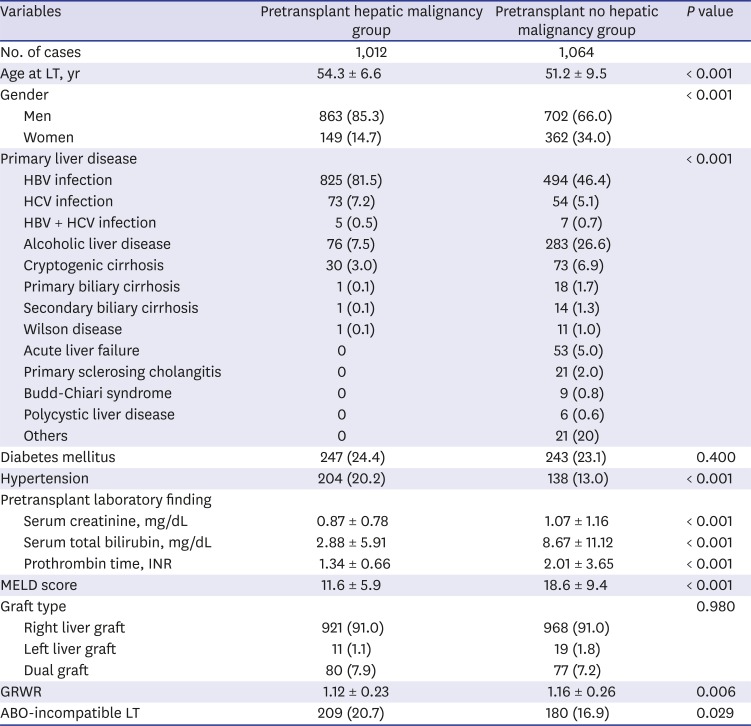
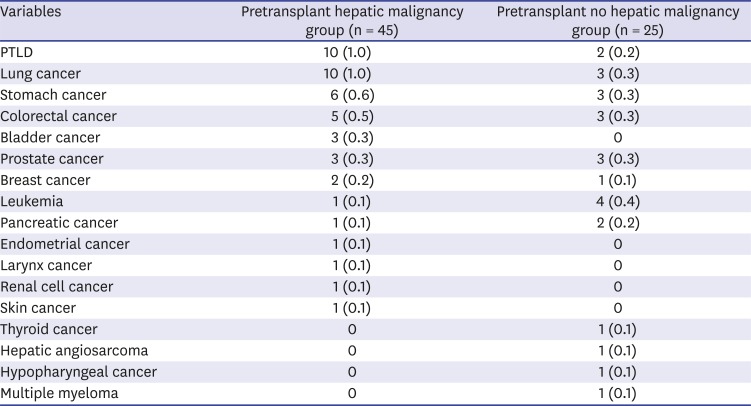
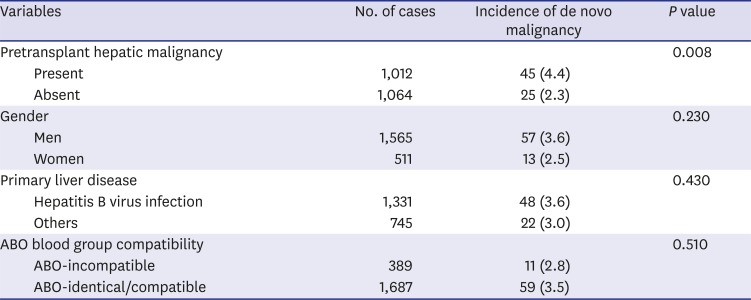




 PDF
PDF Citation
Citation Print
Print



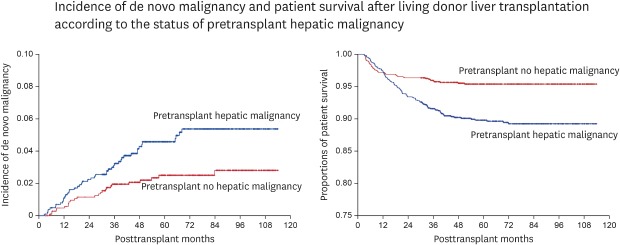
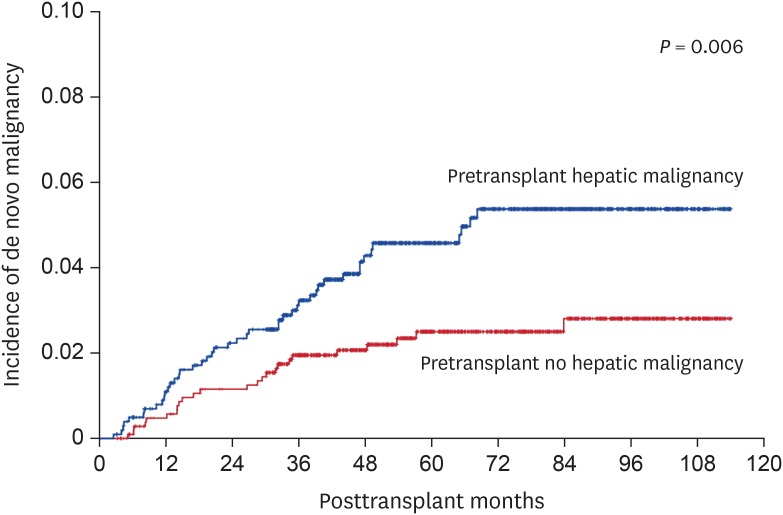
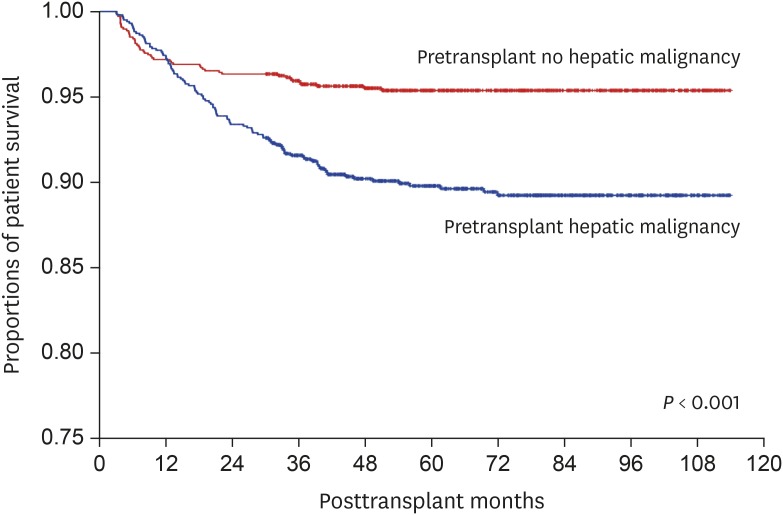
 XML Download
XML Download